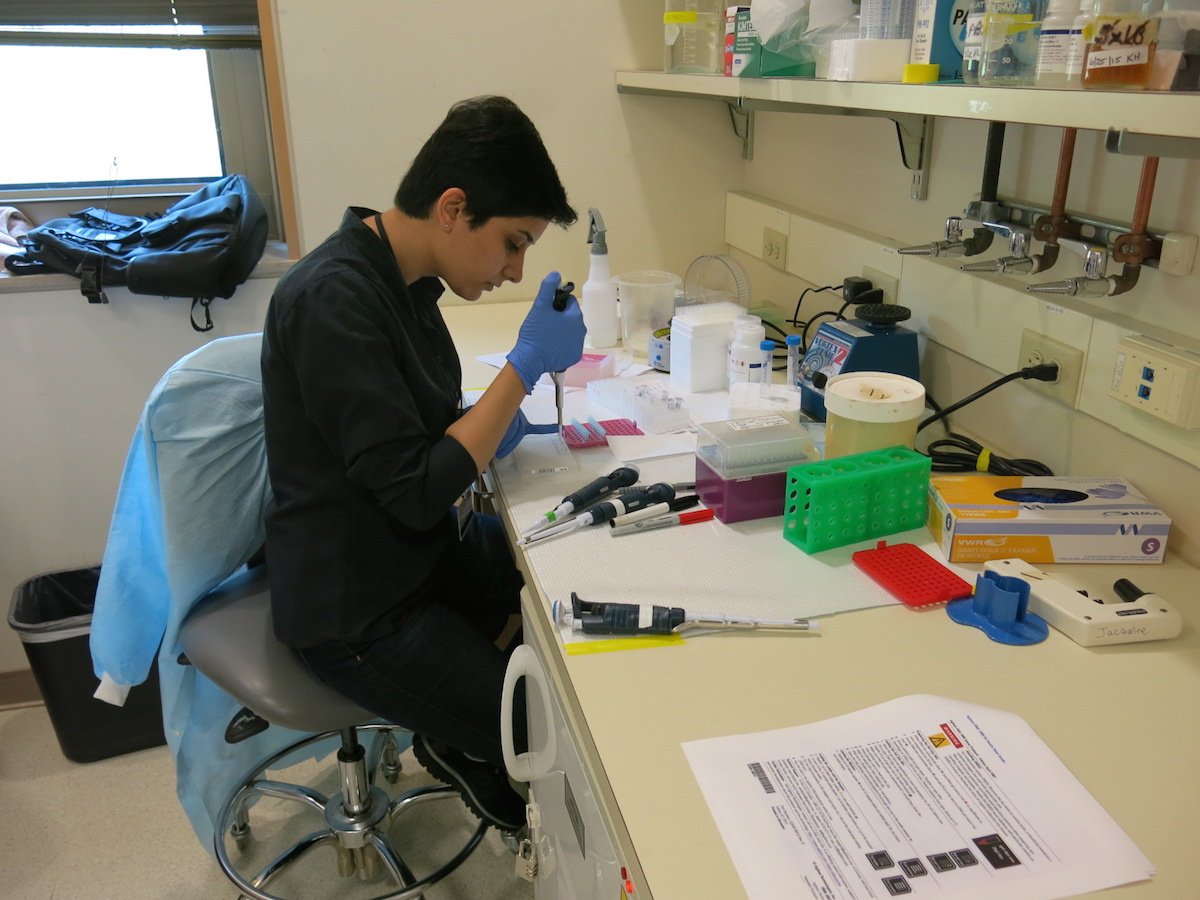U.K. researcher details proposal for CRISPR editing of human embryos
LONDON—The hottest technique in gene editing, called CRISPR, could soon be used to study human embryos. On 14 January, a regulatory committee in the United Kingdom will evaluate a request to knock out development genes in day-old embryos. In a press conference today, Kathy Niakan, a researcher at the Francis Crick Institute in London, discussed the rationale behind her proposed project and the hope that this line of inquiry might one day improve treatments for infertility.
Niakan studies how the single cell of a fertilized egg turns into a blastocyst, the approximately 5-day-old structure that subsequently implants in the mother’s uterus. The blastocyst contains several types of cells. Those destined to become the fetus are called epiblast progenitor cells. They are surrounded by two other types of cells, which become the placenta and another structure, the yolk sac. Niakan’s research uses human embryos, created in fertility clinics, that are left over from in vitro fertilization attempts and donated for research. After being studied, the embryos are destroyed when they are 7 days old.
Researchers have already identified several thousand genes that are active in the early embryo. To find out what these genes do, and which ones are master regulators of development, researchers have several approaches, including deactivating embryonic genes in mice. But only one group of researchers, in Guangzhou, China, has published a paper describing attempts to use this technique in human embryos.
This past September, when Niakan applied to the U.K.’s Human Fertilisation and Embryology Authority (HFEA) for a renewal of her license to conduct research on human embryos , she proposed to extend her work to include CRISPR editing. She hopes CRISPR will reduce the number of embryos required for her research, she said at the press conference; in several organisms, CRISPR has been shown to have higher efficiency compared with other approaches. Niakan believes her team would able to successfully edit up to 8 out of 10 embryos using CRISPR. “If we start off with good quality zygotes, this is likely to work efficiently,” she said.
As a pilot project, Niakan plans to knock out OCT4, a gene that is turned on in embryonic stem cells in both humans and mice. Researchers think that OCT4 is important for pluripotent cells, which can ultimately become any type of tissue. A way to test this idea is to knock out the gene when the embryo is 1 day old and still a single cell. The prediction, based on studies in mice, is that human embryos will continue to develop, but without pluripotent cells.
Niakan will then look at less-well-known genes that may be crucial for early development of human embryos. Unlike OCT4, these genes can only be studied in human embryos because they are not expressed the same way, or at all, in mouse embryos or immortalized lines of human stem cells, says her colleague Robin Lovell-Badge, also at the Crick Institute. The application contains a request to further study two or three such genes, Niakan said, depending on how many embryos will be available. The research would likely require 20 to 30 embryos per gene.
Niakan did not express any opinions at the press conference about the merits or dangers of one day using CRISPR or other techniques for gene therapy of infertility. “At the moment it’s very important to continue the ethical discussions,” she said. But after several questions about potential outcomes of such early research, Niakan did “wildly speculate” that, if certain genes are found to be particularly important for development, one eventual approach might be to check during IVF whether eggs were making the proteins encoded by those genes, and if not, then add them to culture media. But the immediate goal of the research is far more basic: Understand what genes do in blastocysts.
If the HFEA approves the application, Niakan hopes to start research within months. The project would also need to be approved by the U.K. equivalent of an institutional review board.
In a statement about the application, Hugh Whittall, director of the Nuffield Council on Bioethics in London noted: “The changes to DNA made for the purposes of this research could not themselves be used as part of a treatment procedure. There are, however, possible future scenarios in which a modification made in a research context—for example to correct a disease-causing genetic mutation—could, if this were to become permissible, be used in a treatment that would result in the birth of a child. Such research, which could also be licensed under current legislation, would raise a number of significant questions that should be addressed before any such work is undertaken, including about whether, and under what circumstances, a move into treatment (which would require new legislation to be permissible in the U.K.) could be desirable.”
http://www.sciencemag.org/news/2016/01/uk-researcher-details-proposal-crispr-editing-human-embryos
